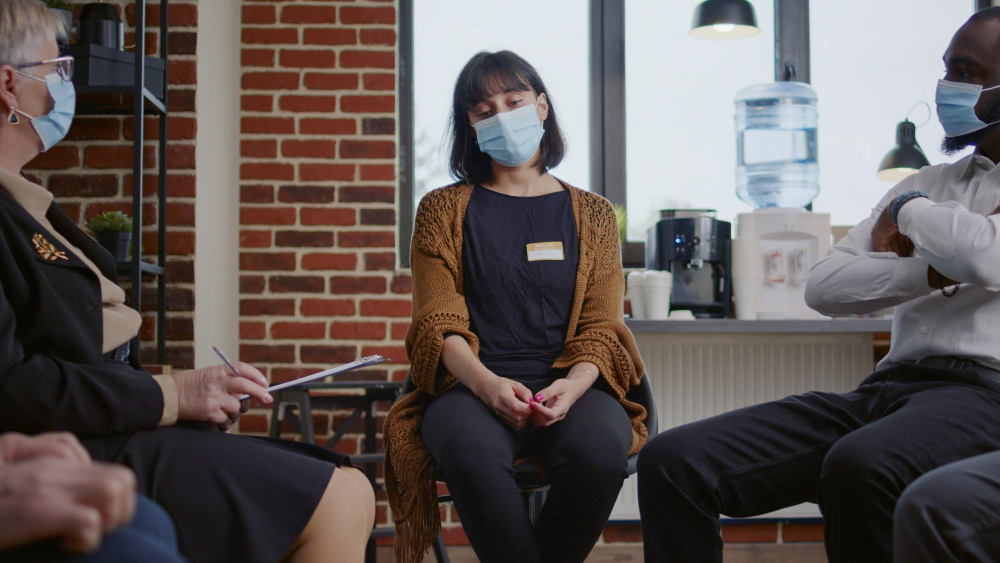Risk and Protective Elements Influencing Drug Usage
July 2, 2024
Explore the factors shaping drug usage! Uncover the risks and protective elements that influence addiction patterns and substance use.
Understanding Substance Use Factors
In order to comprehend the complex nature of substance use, it is crucial to explore the factors that contribute to its development. These factors can be divided into two categories: risk factors and protective factors.

Risk Factors Overview
Risk factors are elements that increase the likelihood of initiating substance use and developing a pattern of regular and harmful use. They can vary from individual to individual, and their presence can significantly impact an individual's susceptibility to substance use. Some common risk factors include:
- Early aggressive behavior
- Lack of parental supervision
- Academic problems
- Undiagnosed mental health problems
- Peer substance use
- Drug availability
- Poverty
- Peer rejection
- Child abuse or neglect
It is important to note that these risk factors can have a more significant impact if they occur during early childhood or persist throughout adolescence. Understanding and addressing these risk factors is crucial for effective prevention strategies and interventions.
Protective Factors Overview
Protective factors, on the other hand, are elements that decrease the likelihood of substance use or reduce the impact of risk factors. They act as buffers against the negative influences that may lead to substance abuse. While risk factors increase vulnerability, protective factors provide a level of resilience. Some common protective factors include:
- Influence of family and peers
- Impact of community support
- Epigenetics and addiction risk
These factors can help individuals navigate through challenging situations and make healthier choices. They promote positive behaviors and attitudes, fostering an environment that discourages substance use [3]. By identifying and strengthening protective factors, individuals can better resist the allure of substance use and maintain healthier lifestyles.
Understanding the interplay between risk factors and protective factors is essential in developing comprehensive prevention and intervention strategies. By addressing risk factors and enhancing protective factors, individuals, families, and communities can work together to create an environment that promotes healthier choices and reduces the likelihood of substance use.
Risk Factors for Substance Use
Understanding the risk factors associated with substance use is vital in addressing and preventing drug abuse. Several factors contribute to an individual's susceptibility to substance use, including youth substance use risks, racial disparities in drug use, and genetic influences on addiction.
Youth Substance Use Risks
Youth substance use is influenced by various risk factors that can increase the likelihood of experimentation and abuse. These risk factors include early aggressive behavior, lack of parental supervision, academic problems, undiagnosed mental health problems, peer substance use, drug availability, poverty, peer rejection, and child abuse or neglect. These factors can have a more significant impact on youths if they occur during early childhood or persist from childhood through adolescence.
Racial Disparities in Drug Use
Racial disparities exist in drug use patterns and prevalence. Various societal and environmental factors contribute to these disparities. For example, certain minority communities may face socioeconomic challenges, lack of access to resources, and higher levels of neighborhood crime, which can increase the risk of drug use. Additionally, cultural and historical factors may influence drug use patterns within specific racial or ethnic groups.
Genetic Influence on Addiction
Genetics play a significant role in an individual's susceptibility to addiction. Studies suggest that approximately half of a person's risk of developing a drug addiction is based on their genetic makeup. Specific genes passed down in families may increase the risk for drug addiction. It's important to note that genetic factors become more significant as individuals transition from adolescence to young and middle adulthood.
The interplay between environmental factors and genetic predisposition is complex. While genetic factors contribute to addiction risk, environmental influences, such as access to drugs, peer pressure, family and community engagement, and stress levels, also significantly impact an individual's risk of developing a drug addiction [4].
Understanding the risk factors associated with substance use is crucial in implementing effective prevention and intervention strategies. By addressing these risk factors, such as providing supportive environments, promoting positive peer relationships, and addressing socioeconomic disparities, we can work towards reducing substance abuse and its negative consequences in individuals and communities.
Protective Factors Against Substance Use
When it comes to substance use, there are not only risk factors that contribute to its development but also protective factors that can help mitigate its influence. Understanding these protective factors is crucial in preventing and addressing drug usage. In this section, we will explore three key protective factors: the influence of family and peers, the impact of community support, and the role of epigenetics in addiction risk.
Influence of Family and Peers
The influence of family and peers plays a significant role in shaping an individual's substance use behavior. Strong parental support and involvement can act as protective factors, diminishing the influence of risk factors such as having peers who abuse substances. When young people have a supportive family environment and positive role models, they are less likely to engage in substance use.
Parental support can include open communication, setting clear expectations and boundaries, and providing guidance and positive reinforcement. When parents are actively involved in their child's life, they can establish a strong foundation of trust and support, which can help reduce the risk of substance abuse.
In addition to family, the influence of peers is also significant. Positive peer relationships and a peer group that discourages substance use can serve as protective factors. When young individuals have friends who prioritize healthy behaviors and discourage substance use, they are more likely to make positive choices.
Impact of Community Support
Community support is another critical protective factor against substance use. Communities that provide access to resources, positive role models, and activities that promote healthy behaviors can help prevent drug usage. Community support can include after-school programs, mentoring initiatives, sports clubs, and other community-based activities that engage young individuals and provide alternatives to substance use.
By fostering a sense of belonging and connection within the community, individuals are less likely to turn to drugs as a means of escape or coping. Building strong community ties and providing opportunities for involvement and personal growth can significantly reduce the risk of substance use.
Epigenetics and Addiction Risk
Epigenetics, the study of how genes are influenced by environmental factors, plays a crucial role in understanding addiction risk [4]. While genetic factors contribute to an individual's susceptibility to addiction, lifestyle choices and environmental factors can modify gene expression, influencing the risk of developing a substance use disorder.
In early adolescence, environmental factors such as family and social influences have a strong impact on young people's drug use. However, as individuals transition into young and middle adulthood, genetic factors become more significant in determining the risk of drug addiction. This highlights the complex interplay between genetics and environmental factors in addiction risk.
Understanding the role of epigenetics underscores the importance of creating a supportive and nurturing environment for individuals at risk of substance use. By addressing environmental factors and promoting healthy lifestyle choices, it is possible to positively influence gene expression and reduce the risk of addiction.
By recognizing and implementing protective factors such as strong family support, positive peer relationships, community engagement, and understanding the influence of epigenetics, we can effectively combat substance use. These protective factors act as a shield against the risks associated with drug usage, creating a supportive framework that promotes healthy behaviors and reduces the likelihood of addiction.
Drug Addiction Patterns
Understanding the patterns and factors behind drug addiction is crucial in addressing the challenges posed by substance use. In this section, we will explore drug addiction development, addiction risk by drug type, and the various factors that influence addiction.
Drug Addiction Development
Drug addiction can develop over time as a result of repeated drug use. When an individual uses drugs, it can lead to changes in the way their brain experiences pleasure. These changes occur in the neurons, which use neurotransmitters to communicate. The addicting drug causes physical changes to some neurons in the brain, and these changes can persist even after the drug use has ceased.
The development of drug addiction can vary from person to person. For some individuals, it may start with experimental use of a recreational drug in social situations. As drug use becomes more frequent, addiction can take hold. In other cases, addiction may begin when individuals take prescribed medications or obtain them from others who have prescriptions [5].
Addiction Risk by Drug Type
The risk of addiction and the speed at which addiction develops can vary depending on the type of drug used. Some drugs have a higher risk and can lead to addiction more rapidly than others. For example, opioid painkillers are associated with a higher risk of addiction and can cause dependence relatively quickly.
It's important to note that individual susceptibility to addiction can also play a role. Factors such as genetic predisposition, mental health conditions, and environmental influences can contribute to an individual's vulnerability to addiction [5].
Factors Influencing Addiction
Numerous factors can influence an individual's risk of developing a drug addiction. These factors can include:
- Access to drugs: Easy availability and accessibility of drugs can increase the likelihood of drug use and addiction.
- Peer pressure: Social influences and pressure from friends or acquaintances can impact an individual's decision to use drugs.
- Family involvement: Family dynamics, including parental substance use, can contribute to an increased risk of addiction.
- Community support: The presence of supportive communities and access to resources for prevention and treatment can help mitigate addiction risk.
- Age of drug use initiation: Early initiation of drug use during adolescence can increase the likelihood of developing addiction later in life.
- Barriers to treatment: Limited access to appropriate treatment options can hinder individuals from seeking help for their addiction.
- Disadvantaged neighborhoods: Living in neighborhoods with high crime rates, poverty, and limited resources can contribute to addiction risk.
- Stress levels in the environment: High levels of stress, trauma, or adverse childhood experiences can make individuals more susceptible to addiction [4].
Understanding these factors can aid in the development of effective prevention and intervention strategies to address drug addiction. By addressing the underlying risk factors and promoting protective factors, individuals can be better equipped to resist the allure of drugs and reduce the likelihood of addiction.
Substance Use Statistics
Understanding the prevalence and patterns of substance use is essential in addressing the risk and protective elements influencing drug usage. By examining substance use statistics, we can gain insight into the scope of the issue and identify areas for intervention and support.
Substance Use Among U.S. Youth
Substance use among U.S. youth continues to be a matter of concern. According to a study published by the National Center for Biotechnology Information (NCBI), recent epidemiologic surveys indicate that a significant number of U.S. youth have experimented with substances. For example, the study reported the following findings from the 2006 Monitoring the Future survey:
Substance Use by 12th and 8th Graders:
- Alcohol (used at least once): 72.7% of 12th graders, over 40% of 8th graders
- Marijuana (used at least once): 42.3% of 12th graders, 15.6% of 8th graders
- Cigarettes (used at least once): 47.1% of 12th graders, 24.6% of 8th graders
These statistics highlight the need for preventive measures and educational programs to address substance use among young people.
Substance Use Demographics
Substance use demographics in the U.S. reveal important insights into the patterns and disparities associated with drug usage. According to the same study published by NCBI (NCBI), rates of past-month illicit drug use in the U.S. were highest among African Americans, followed by whites, Hispanics, and Asians, respectively.
When examining specific substances, the study found that rates of alcohol use were higher among whites, those with full-time employment, higher educational attainment, and those living in urbanized regions. Tobacco use, on the other hand, was slightly higher among whites compared to African Americans, and lower for Hispanics and Asians. Tobacco use was also more prevalent among those with lower educational attainment, the unemployed, and those living in rural areas.
These demographic disparities indicate the need for targeted prevention and intervention efforts to address substance use across different racial and socioeconomic groups.
Socioeconomic Influence on Use
Research has shown that socioeconomic factors play a role in substance use patterns. According to the NCBI study, rates of substance use were more likely among those with lower educational attainment, the unemployed, and those residing in urbanized areas.
Furthermore, inequities exist in the residential proximity to stores selling tobacco and alcohol. Stores selling tobacco and alcohol are disproportionately located in neighborhoods with higher percentages of minorities, particularly African Americans and Hispanics, and lower-income communities. These patterns of racial and economic inequity contribute to disparities in substance use opportunities and access to resources for prevention and treatment.
By understanding the substance use statistics, we can better comprehend the challenges and disparities surrounding drug usage. It is crucial to address these factors through comprehensive strategies that promote education, prevention, and access to support services for individuals and communities affected by substance use.
Cultural Factors in Substance Use
When examining the factors influencing substance use, it is important to consider cultural factors that can play a significant role. In this section, we will explore the impact of cultural factors on substance use, focusing specifically on Hispanic/Latina substance use, American-Indian substance abuse, and the treatment needs of Native Americans.
Hispanic/Latina Substance Use
Substance use among the Hispanic/Latina population is influenced by various cultural factors. Acculturation, the process of adopting the cultural norms and behaviors of a new society, can have both positive and negative effects on substance use patterns. According to the National Survey on Drug Use and Health (NSDUH), the rate of substance use among Hispanic/Latina individuals is generally lower compared to other ethnic groups. However, as acculturation progresses, substance use rates tend to increase.
Factors such as language barriers, discrimination, and limited access to healthcare can contribute to challenges in prevention and treatment efforts for substance use among the Hispanic/Latina population. Culturally tailored interventions that consider the specific needs and values of the community can be effective in addressing substance use issues and promoting healthier behaviors.
American-Indian Substance Abuse
Substance abuse among American-Indians is a complex issue influenced by a range of cultural, historical, and socioeconomic factors. Historical trauma, loss of cultural identity, and limited access to resources are some of the unique challenges faced by this population. According to the Indian Health Service, American-Indians have higher rates of substance abuse compared to the general population. Substance use disorders can have devastating effects on individuals, families, and communities.
Addressing substance abuse in the American-Indian population requires culturally sensitive approaches that recognize and respect the unique cultural heritage and traditions of the community. Culturally appropriate prevention programs, community-based interventions, and access to quality healthcare services are essential for supporting individuals in their recovery journey.
Native-American Treatment Needs
The treatment needs of Native Americans facing substance use disorders are multifaceted. Factors such as historical trauma, cultural disconnection, and socioeconomic challenges can impact the effectiveness of treatment interventions. It is crucial to recognize the importance of incorporating cultural practices, traditions, and spirituality into treatment approaches to foster healing and recovery.
To effectively address the treatment needs of Native Americans, a comprehensive approach that combines evidence-based practices with culturally specific interventions is recommended. Culturally competent treatment providers who understand the unique cultural context and can provide culturally sensitive care are essential in supporting Native Americans on their path to recovery.
Understanding the cultural factors that influence substance use among different populations allows for the development of targeted prevention and treatment strategies. By incorporating cultural values, traditions, and community involvement, it is possible to create interventions that are more effective and respectful of the diverse needs of these populations.
References
Learn About Clear Steps Recovery and How We Can Help You
Once you reach out to Clear Steps Recovery, your path becomes clear, and you can get the help and support you need to break the cycle of addiction. Our serene woodland environment promotes physical, mental, emotional, and spiritual healing.
Call today or contact us online to get started.
The Path Is Clear – Take Your First Steps Today with Clear Steps Recovery
With our team and your desire to heal, we can improve your quality of life and functional abilities, so you can get back to living your best life.
































.jpg)


















.jpg)
.jpg)















































